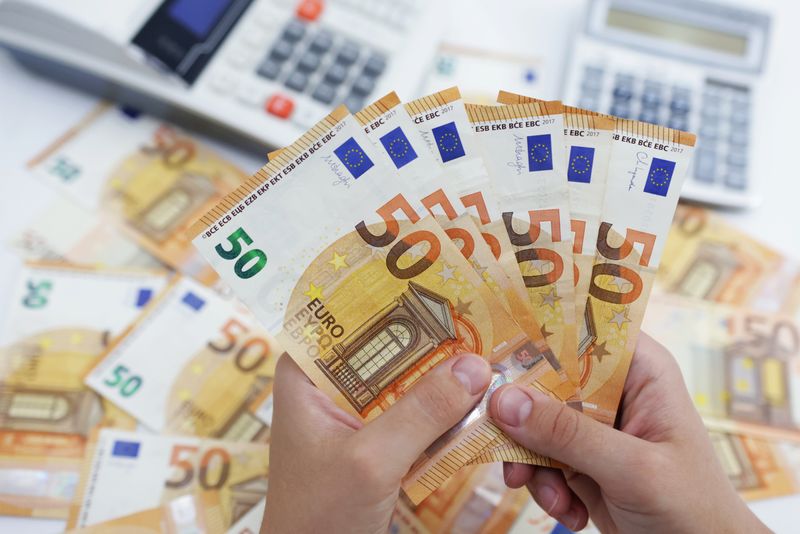By Karen Brettell
(Reuters) -The euro was on course for its biggest weekly decline against the dollar in two months on Friday on concerns that a new government will worsen France’s budget situation as early parliamentary elections loom.
The yen hit a six-week low against the dollar before recovering after the Bank of Japan (BOJ) surprised markets with an easing of monetary policy.
French markets on Friday saw the biggest weekly jump since 2011 in the premium investors demand to hold French government bonds and bank shares.
The concern is “the instability combined with already existing fiscal pressures,” says Brad Bechtel, global head of FX at Jefferies in New York, adding that “every time spreads widen in Europe, the euro suffers .”
French Finance Minister Bruno Le Maire said on Friday that the euro zone’s second-largest economy was at risk of a financial crisis if the far right or left won because of their heavy spending plans.
Marine Le Pen’s Eurosceptic National Rally (RN) leads in opinion polls.
“On both sides of the French political spectrum, the parties campaigning are fiscally expansionist parties,” said Karl Schamotta, chief market strategist at Corpay in Toronto. “The markets are mainly reacting to additional budgetary pressure.”
The euro is on track for a weekly decline of 0.95% – the biggest since April – and was last down 0.34% on the day at $1.0699. It fell to $1.06678, the lowest since May 1.
The weakness of the euro has helped push the dollar higher. The index, which tracks the currency against six peers, rose 0.3% to 105.55 and reached 105.80, the highest level since May 2.
“We are seeing flows into the US at both ends of the spectrum – from both the safe-haven and yield-seeking sides – given that US yields remain well above those available elsewhere,” he said. Schamotta.
The European Central Bank and the Bank of Canada have started cutting interest rates, while the Federal Reserve remains stable.
The U.S. central bank struck a more hawkish tone than expected at this week’s meeting, as Fed officials forecast just one rate cut this year and delayed the start of rate cuts until perhaps December.
But for now, “the Fed is kind of taking a backseat when it comes to the dollar,” Bechtel said. Elections in emerging markets and Europe are instead driving movements, he said.
A survey on Friday showed that US consumer confidence deteriorated in June as households worried about inflation and incomes.
Other data showed that U.S. import prices unexpectedly fell in May due to lower energy product prices, giving fresh impetus to the domestic inflation outlook.
This week’s softer-than-expected consumer and producer price inflation in May has raised hopes that inflation will continue to ease closer to the Fed’s 2% annual target and allow for a rate cut as early as September.
Chicago Fed President Austan Goolsbee said Friday he felt “relief” after the consumer inflation data, but added that more progress needs to be made.
The yen fell following the BOJ’s decision to hold rates steady and resume bond purchases.
In a surprise to markets, the BOJ said it would continue buying government bonds at its current pace for now and set out details of its tapering plan at its July policy meeting.
BOJ Governor Kazuo Ueda said the central bank was “paying close attention” to the impact of the weak yen on inflation, adding that a rate hike in July was possible depending on economic data.
The dollar last rose 0.17% to 157.29, having previously reached 158.26, its highest level since April 29.

The yen’s decline to a 34-year low of 160.245 per dollar in late April led to several rounds of official Japanese interventions totaling 9.79 trillion yen ($62 billion).
In cryptocurrencies, bitcoin fell 1.84% to $65,453.


